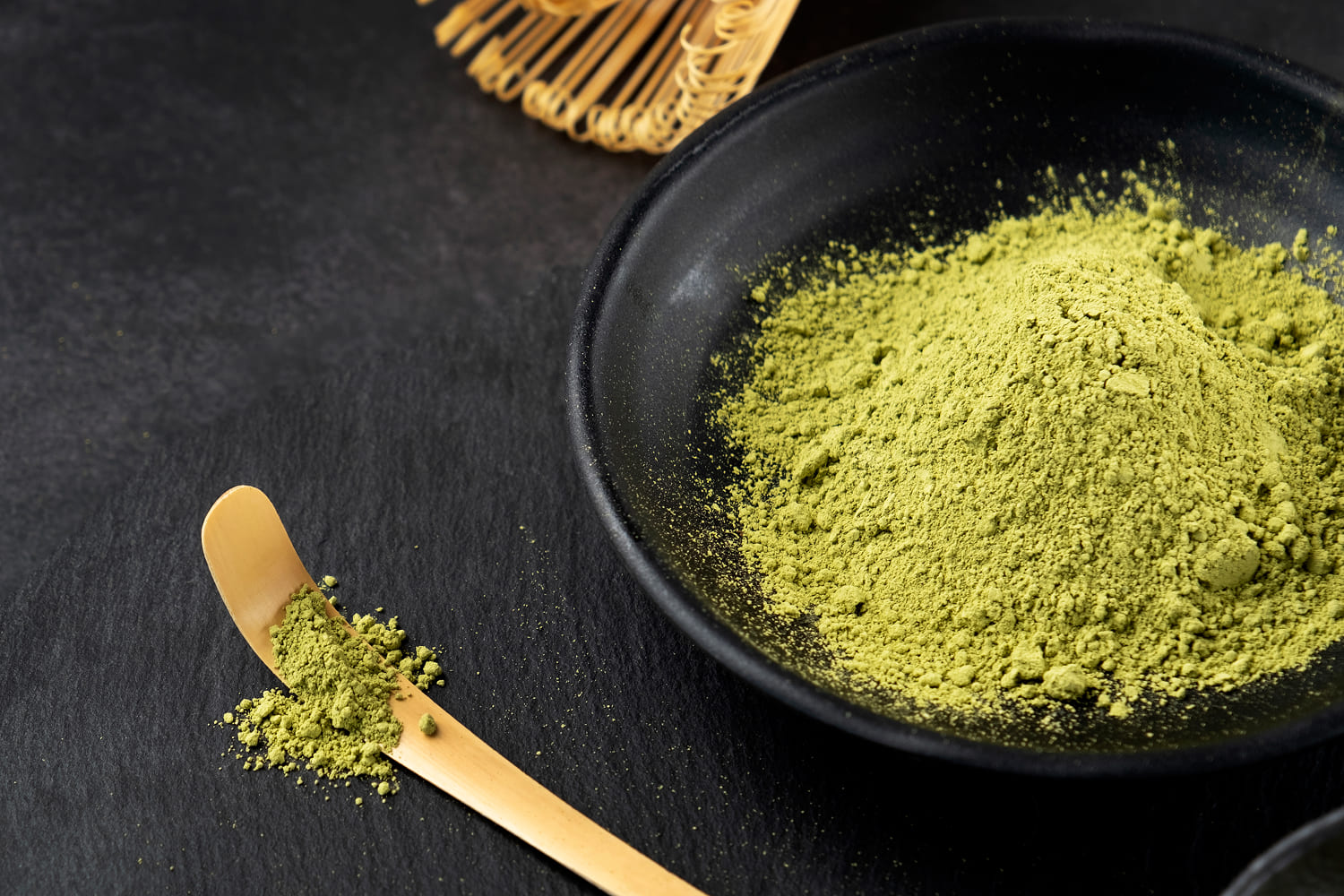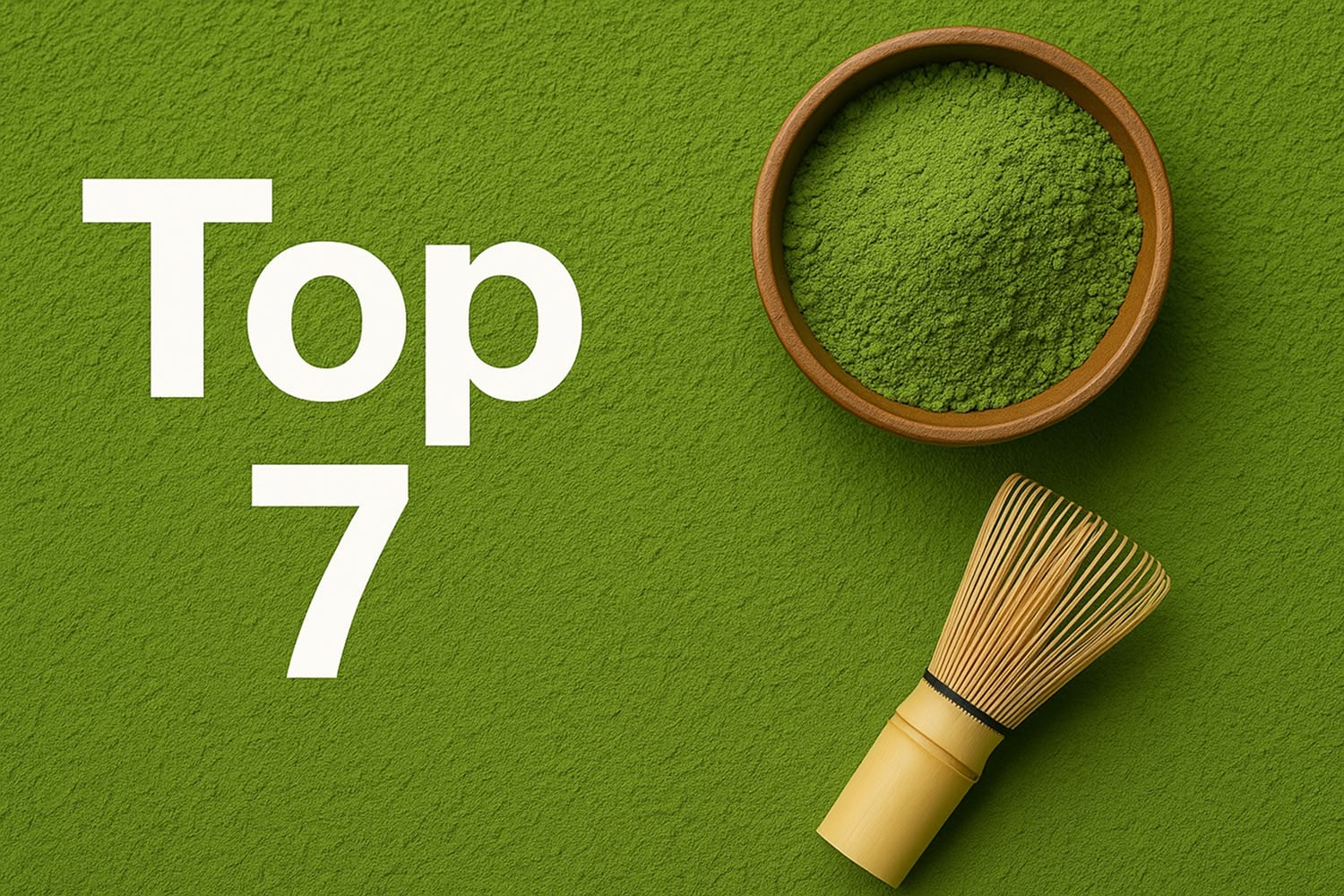Quel est le gout thé matcha ? Tout savoir sur son goût particulier


What Does Matcha Taste Like? How to Understand and Enjoy Its Flavor
If you’ve ever tried matcha tea for the first time, you were probably surprised: bitter? grassy? smooth? umami?
Matcha’s taste leaves no one indifferent — and that’s normal. It’s very different from classic green tea, and its aromatic profile can be confusing… or captivating!
So what should matcha really taste like?
Why do some powders taste bitter while others reveal a vegetal sweetness?
Can the flavor be softened? And most importantly: how can you choose a good-tasting matcha without making mistakes?
In this article, we’ll help you understand, identify, and appreciate the flavors of matcha — while avoiding common errors. 🍃
The Taste of Matcha Tea: What Are We Really Talking About?
Matcha tea has a complex and unique flavor.
Unlike steeped tea, where you discard the leaves, matcha is fully consumed — which makes its flavors much more intense and concentrated.
You’ll often find:
- A vegetal note (fresh grass, spinach)
- Bitterness — more or less depending on quality
- A hint of umami (the Japanese “savory” taste)
- Sometimes a touch of natural sweetness, especially in high-quality matcha
The leaf quality, growing method (shade-grown or not), and freshness of the powder all greatly impact the final flavor.
🎯 Good to know: matcha isn’t supposed to be extremely bitter. A good matcha should be balanced, smooth, almost creamy.
Why Does Matcha Have Such a Distinctive Taste? 🌱
Matcha’s unique flavor comes from several combined factors:
1. Shade cultivation
Matcha leaves are grown in the shade for 3 to 4 weeks before harvest, which increases:
- Chlorophyll (gives an intense vegetal taste)
- L-theanine (an amino acid that softens bitterness)
- Caffeine (higher than in regular green tea)
2. Stone grinding
This traditional method preserves volatile aromas and produces ultra-fine powder.
Fast or industrial grinding can overheat the leaves and damage the flavor.
3. Matcha grade
- Ceremonial: smooth, umami-rich, low bitterness → ideal for drinking straight
- Premium: good balance of quality and price → great for lattes
- Culinary: more bitter, stronger → best for recipes
How to Appreciate the Taste of Matcha (and Soften It if Needed)
Many beginners find matcha too bitter at first. Here are a few concrete tips to enjoy it more:
1. Prepare it properly
Poor preparation leads to bitterness. Follow these basics:
- 1 to 2 g of matcha for 70 ml of hot water (70–80°C)
- Always sift the powder before whisking
- Whisk vigorously in an “M” motion with a chasen (bamboo whisk)
2. Add plant-based milk
A matcha latte (with oat or almond milk) is ideal for beginners. It softens the bitterness but keeps the benefits.
3. Lightly sweeten
A little honey, agave syrup, or blended date can round out the taste — without completely masking it.
4. Choose a milder matcha
Look for organic Japanese matcha, first harvest, from regions like Uji or Kagoshima — they tend to be more delicate.
Can You Dislike Matcha’s Taste? And Is That a Problem? 😅
Yes, of course. Matcha divides opinions.
Some people fall in love at the first sip. Others find it too grassy or intense.
But this reaction often comes from:
- A bad first experience (low-grade matcha)
- Poor preparation (too much powder, boiling water)
- A lack of taste familiarity — it’s a flavor to get used to
🎯 Tip: Try different brands, different recipes, and start with a light latte before drinking pure matcha.
How to Choose a Good-Tasting Matcha? Our Criteria 🛒
If the taste of matcha varies so much, it’s mostly about quality.
Here’s what to check before you buy:
✅ Japanese origin (avoid Chinese or untraceable matcha)
✅ Ceremonial or premium grade for drinking
✅ Bright green color (not dull or khaki)
✅ Ultra-fine powder (no grainy texture)
✅ Opaque packaging with recent harvest date
💡 We recommend checking our 2025 matcha comparison guide to make a confident, taste-based decision.
FAQ – Matcha Taste: Your Most Frequent Questions
Why is matcha sometimes bitter?
Often due to poor quality matcha or water that’s too hot. Second or third harvest leaves are also more bitter.
Which matcha tastes best?
Organic Japanese ceremonial matcha, first harvest, from Uji, Nishio, or Kagoshima are known for their smooth, balanced taste.
Can the taste of matcha be softened?
Yes: add plant milk, a natural sweetener, or blend it into a fruit smoothie.
Do all matchas taste the same?
No. Flavor depends on terroir, production method, grade, and even freshness.
Does the taste change with storage?
Yes. Poorly stored matcha (exposed to light or moisture) becomes dull or bitter. Keep it cool, dry, and airtight.
In Summary: The Taste of Matcha Can Be Learned (and Enjoyed) 💚
Matcha tea has a flavor that’s far from uniform: it can be grassy, sweet, umami-rich — or very bitter.
This unique profile depends on the tea’s quality, how it’s prepared, and your own palate.
But the good news? There’s a matcha for every taste.
You just need to experiment, learn how to prepare it, and invest in quality.
👉 Ready to find your matcha match?
Explore our 2025 tasting selection of the best matchas to enjoy at home.

Japanese Green Tea Co
Prix à partir de :
14,00$
Use code LMC to enjoy 10% off premium, authentic Japanese matcha. Discover the perfect balance of quality and tradition with every cup.

Découvrez le top 7 des meilleurs Matcha en poudre
Notre sélection exclusive des Shilajits himalayens les plus purs et efficaces, testés et approuvés par nos experts.
